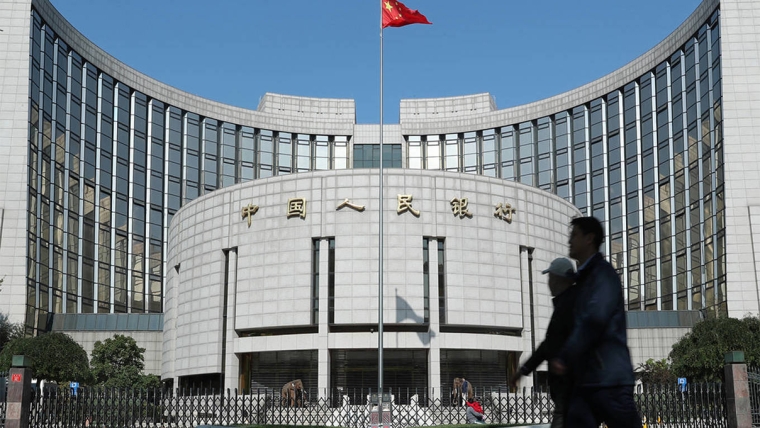
The start of 2024 has been marked by a wave of increasingly pessimistic forecasts for China’s economy. While the Chinese government remains optimistic, the International Monetary Fund projects that GDP growth will slow to 4.6% this year, from 5.4% in 2023. Meanwhile, the Chinese stock-market rout is expected to continue after share prices fell to their lowest level in five years.
But China’s economic prospects are brighter than they appear. While the government has yet to publish its own outlook for 2024, most Chinese economists expect it to set an annual growth target of 5%. Given China’s better-than-expected economic performance in 2023, I believe that 5% growth is both necessary and feasible.
Consumption was the main driver of Chinese growth in 2023, accounting for 82.5% of the increase in GDP. The Chinese government has not released its final consumption figures, but retail sales of social consumer goods serve as a useful proxy. Such sales increased by 7.2% last year, reflecting a recovery in consumer spending after a dip in 2022. But sustaining this growth momentum seems unlikely, and many Chinese economists expect a significant consumption slowdown in 2024.
Weighed down by weaker global demand, China’s net export growth declined by 1.3% in RMB terms in 2023. Given that the global economic outlook is unlikely to improve in 2024, it is reasonable to expect that the contribution of net exports to China’s GDP growth will be minimal. Consequently, to meet a 5% GDP growth target, investment growth must increase significantly. China’s fixed asset investment (FAI), a proxy of capital formation, rose by only 3% in 2023, however, compared to 5.1% in 2022.
The FAI consists of three primary categories: manufacturing, real estate, and infrastructure. Within the manufacturing sector, several industries experienced significant growth in 2023, as investments in electrical machinery and equipment, instruments and meters, automobiles, and high-tech surged by 34.6%, 21.5%, 17.9%, and 10.5%, respectively. But the overall increase in manufacturing investment was just 6.3%, compared to 9.1% in 2022. Meanwhile, real-estate investment fell by 9.1% in 2023 and, despite signs of improvement, is still expected to decline this year.
If manufacturing investment fails to rise significantly, and the recovery in real-estate investment remains underwhelming, a rough calculation – based on available and somewhat inconsistent data – indicates that infrastructure investment would need to grow by more than 10% to compensate for the decline in consumption growth. Given that infrastructure investment increased by just 5.8% in 2023, achieving double-digit growth poses a significant challenge.
Nevertheless, the fact that the Chinese economy is in a quasi-deflationary period, with both the consumer price index and the producer price index in negative territory, enables policymakers to introduce significant fiscal stimulus to boost economic growth without having to worry about inflation, at least in the short term.
Considering these deflationary pressures, the People’s Bank of China should ease its monetary policy and set its inflation target at 3-4%. Acknowledging the endogeneity of the money supply, the PBOC should place greater emphasis on interest rates as a short-term macroeconomic tool, rather than directing financial resources toward specific industries and companies.
Infrastructure investment remains the government’s most effective instrument for stimulating the economy when demand is weak. Should the government encounter difficulties in financing infrastructure investment through the issuance of sovereign bonds, the PBOC could implement its own version of quantitative easing and purchase government debt on the open market.
Contrary to some economists’ claims, China is not grappling with excessive infrastructure investment. In fact, the country still has a large infrastructure gap that it must close, especially in critical areas such as health care, elderly care, education, scientific research, urban development, and transportation. Its public facilities fall short of those in developed countries and even lag behind some developing economies.
To be sure, infrastructure investment tends to be unprofitable and does not generate significant cash flows, which is why such investments should be financed directly through government budgets. But to ensure that China meets its infrastructure needs, policymakers must invest in efficient, high-quality projects.
China’s decision to issue an additional CN¥1 trillion (US$137 billion) in government bonds in 2023 marked a significant policy shift. By allowing the budget-deficit-to-GDP ratio to increase from 3% to 3.8%, the Chinese government has signaled that it may no longer limit annual budget deficits and public debt to 3% and 60% of GDP, respectively (on the model of the European Union’s Maastricht Treaty).
While the government’s top priority in 2024 is to boost economic growth and restore economic confidence, China must also grapple with high local-government debt and an ongoing liquidity crisis in the real-estate sector that, if left unaddressed, could escalate into a full-blown debt crisis.
Fortunately, the Chinese government has the financial resources it needs to confront these challenges head-on. By implementing expansionary fiscal and monetary policies and pursuing meaningful reforms, China would be well-positioned to reverse its decade-long economic slowdown in 2024 and maintain robust growth for years to come.
Yu Yongding, a former president of the China Society of World Economics and director of the Institute of World Economics and Politics at the Chinese Academy of Social Sciences, served on the Monetary Policy Committee of the People’s Bank of China from 2004 to 2006. Copyright: Project Syndicate, 2024, and published here with permission.
7 Comments
China will inevitably move to consumerism if they want to maintain GDP growth.
How much planet is left to consume?
And of what quality?
They came too late to the party.
think about it, the key part of the limitation of resource is energy. if most of the planet go renewable energy, we will all be okay.
No they didn't PDK, more like we started the sprint to the finish line too early. China have all the remaining useful resources and it must be tough for them now with only single digit growth. They are still being underestimated by the western media, but then that's the narrative they want us to believe.
How much planet is left to consume?
And of what quality?
They came too late to the party.
This is one of the best talks I've heard in a while on China's economy, by Eric Li, a famous Chinese VC and political scientist. https://youtube.com/watch?v=Vb835NzfzFwI Link
Tis but a flesh wound!!!!

We welcome your comments below. If you are not already registered, please register to comment
Remember we welcome robust, respectful and insightful debate. We don't welcome abusive or defamatory comments and will de-register those repeatedly making such comments. Our current comment policy is here.